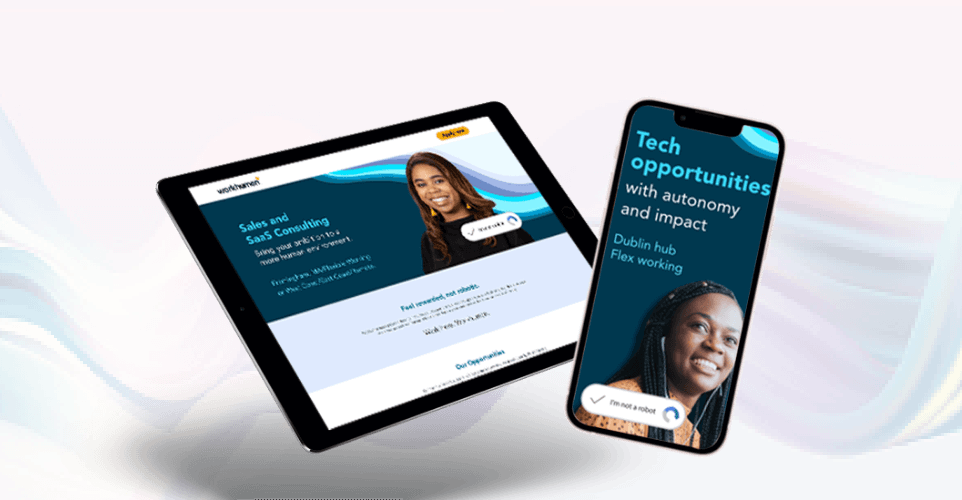You’re a winner. You’ve done it. You not only built the business case for developing your global employer brand and employer value proposition, you had the budget signed off and you’ve actually gone and delivered it. It has been a long slog but my goodness you’ve achieved. Kudos, credit and props to you.
Your journey possibly went a bit like this:
Let’s keep it simple…if only!
You gathered together all of those people who you just had an inkling would suddenly have a pernickety but limelight-stealing hand in the ‘project’ near its conclusion despite never showing a glimmer of interest previously. You even had the decency to include them as part of a steering group. And you made a pact that you wouldn’t mention the word ‘brand’ or the acronym ‘EVP’ from that point forwards in order to keep it simple and not confuse ‘your people’. You even rolled with the punches that for some inexplicable reason, Canada and Puerto Rico refused to be involved in your ‘global project’.
Research is key and so is segmentation
You researched inside and outside the business; you surveyed; you spoke to loads of people in focus groups and 1-2-1 interviews; you segmented your audiences to include HiPos, HiPers, new joiners, people who’ve been about for years, people who have left, people you didn’t know were about to leave, employee resource groups, people in far flung countries and in inconvenient time zones, Geeks, Wizards, Ninjas and Procurement.
Authenticity comes from within
You found out lots you already knew about your business: car parking is a nightmare; technology for new joiners doesn’t work; communication is poor; departments operate in silos. Some of the stuff you found, you could never share with the ‘leadership team’ unless it was dipped in a little coat of sugar and packaged in a wrapper with a disclaimer on every surface. But at least on the flip side, everyone recognises you’re like one big happy family sharing 3 of the 7 values they can actually remember – a family, albeit one that’s just a little dysfunctional at times. You discovered what people know or think they know it’s really like to work for your company. You achieved authenticity in abundance.
Dilute the proposition at your peril
After much analysis and reporting you derived a fabulously clever model that has pillars, values, reasons to believe, selling points, big ideas and links to your consumer brand and proposition. Better still, and in the interests of simplicity (remember everyone signed up to that at the beginning), you contrived a segmentation matrix with a hierarchy of messaging that covered all 16 segmented audiences in 18 different countries. You negotiated the peace settlement resulting from the circular debate of “that’s just not us – it’s too aspirational” to “if you take our name off it, aren’t we like everyone else?” and your slightly diluted model was excitedly gifted to the ‘activation magicians’ – the creative team – to bring the whole thing to life; to tell your story in a compelling and award-winning way.
Seamlessly, your toolkit of attraction, engagement and retention communication materials (see what happens if we can’t say employer brand) along with the launch collateral and playbook were delivered as you reached your final milestone on the project plan. Job done. Aced it.
The reality
Much of this journey may be an all too real experience for many of you. And it’s the last part that probably seems the most fictional. That’s because it just doesn’t happen like that. Turning all that has gone before into something tangible, meaningful and effective is a major hurdle and often a significant stumbling block to success.
Creativity is the connection to the candidate, to your employees and the world at large. It’s where the emotional engagement happens and the real sense of purpose is communicated. It’s where we open the consciousness to possibilities and opportunities. The process to create that activation that lies in the proposition or brand is challenging. For creativity to flourish, it needs time, information, license to explore and most of all it needs simplicity. Yet for many reasons that’s rarely the case:
- The brief has become more and more complex as we’ve gone on
- The expectation and anticipation of the final output has been built up during the course of the project – living up to that is hard
- Creative is subjective and means different things to different people – one of the key reasons we segment audiences is to ensure relevance of message
- Over-segmentation of our audiences adds multiple layers of complexity and scope for misunderstanding
- Inclusion of a multi-discipline steering group to avoid hurdles later in the process is sensible but has the potential for decision by committee and watering down of key differentiators
- The clamour to find and apply innovation is not necessarily sustainable in recruitment – although we’re trying hard to do so
- The degree of creativity is frequently governed by the confines of the consumer brand
So, the next time you’re managing, implementing or even just involved in an Employer Brand or EVP initiative, think about the journey you’ve been on and how complicated it may have become. Keep it as simple as you can because landing it successfully is anything but simple. Particularly if you’re looking to pick up awards and recognition along the way.
Simon Thomas is Brand and Strategy Director at Talent Works International. TWI is a global talent communications firm that helps organisations around the world build effective and efficient talent strategies through our research, sourcing and creative teams.








